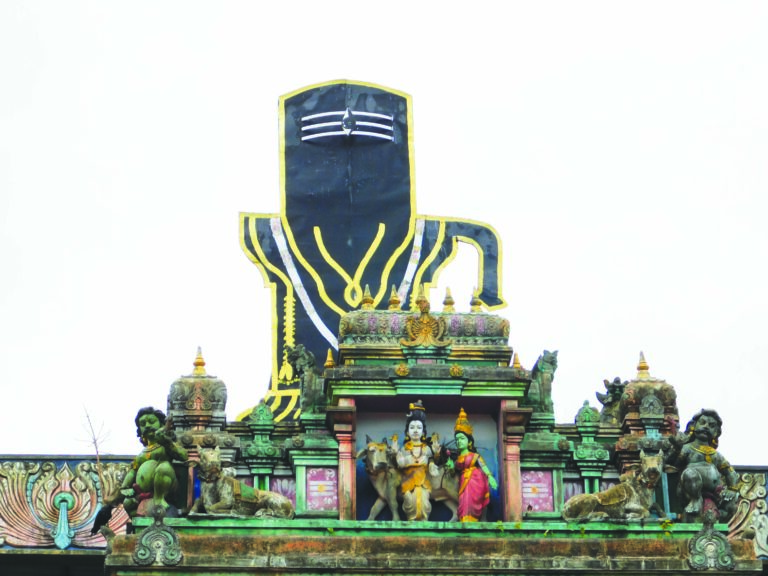Sri Lanka is India`s closest neighbour separated only by Palk Straits. The relationship between the two countries can be traced to seven thousand years ago when the ancient Indian epic Ramayana took place. Since then, both sides have built upon a legacy of intellectual, cultural, religious and linguistic interaction with just geographical barriers in between. In a comprehensive essay, Katie Sahiar convincingly establishes this connect, consolidating her views, mentioning tell-tale scriptures. Her fascinating treks across the island spins and sums up the country’s most durable epic which she conjures up with a prosaic and chronological description.
Text and photos : Katie Sahiar
“Ram is not just a name, but the symbol of an ideal. Ideal son, ideal brother, ideal husband and a king who abides by Dharma.” – Swami Vivekananda
“No matter how wise a person like Ravana; Even if he is a ten-headed intelligent one; If he is devoid of Dharma, then destruction is certain.” – Ramayana
The sands of time inter everything over which they flow, but some occurrences resist the tide and remain steadfast in memory. Events of the Ramayana, occurred seven thousand years ago, but live in word and deed even today, in both India and Sri Lanka binding both countries in an indestructible historical bond. Equally strong are the ties of worship. The shared pantheon, mythologies and rituals particularly in the worship of Shiva and Vishnu, to whom both countries have raised fantastic temples that still endure. The same festivals are celebrated, similar clothes are worn, similar food is eaten and a language, Tamil, is also shared. Surely, in a bygone age the two were one!
Imagination spurred, I was gripped with a fever to experience Sri Lanka and rewind the drama of the Ramayana, most of which was played out in Sri Lanka and whose sites endure even today. With sights set upon this adventure we boarded the flight to Sri Lanka.
The contemporary bond between the two countries is cricket: Our flight – full to the gills with the cricketing crowd, as Sri Lanka was to play against India the next day – touched down in Colombo in the dead of night and as the plane came to a halt, the cricketing crowd poured out like molten lava, while we disembarked unhurriedly, gained the airport, retrieved our luggage and emerged into a deserted airport lounge. Our guide and driver Tarake awaited us. He welcomed us with garlands of orchids and then escorted us to the waiting area, while he went to fetch the car. All around was dark and still; few lamps were lit for the traveler. Colombo slept soundly.
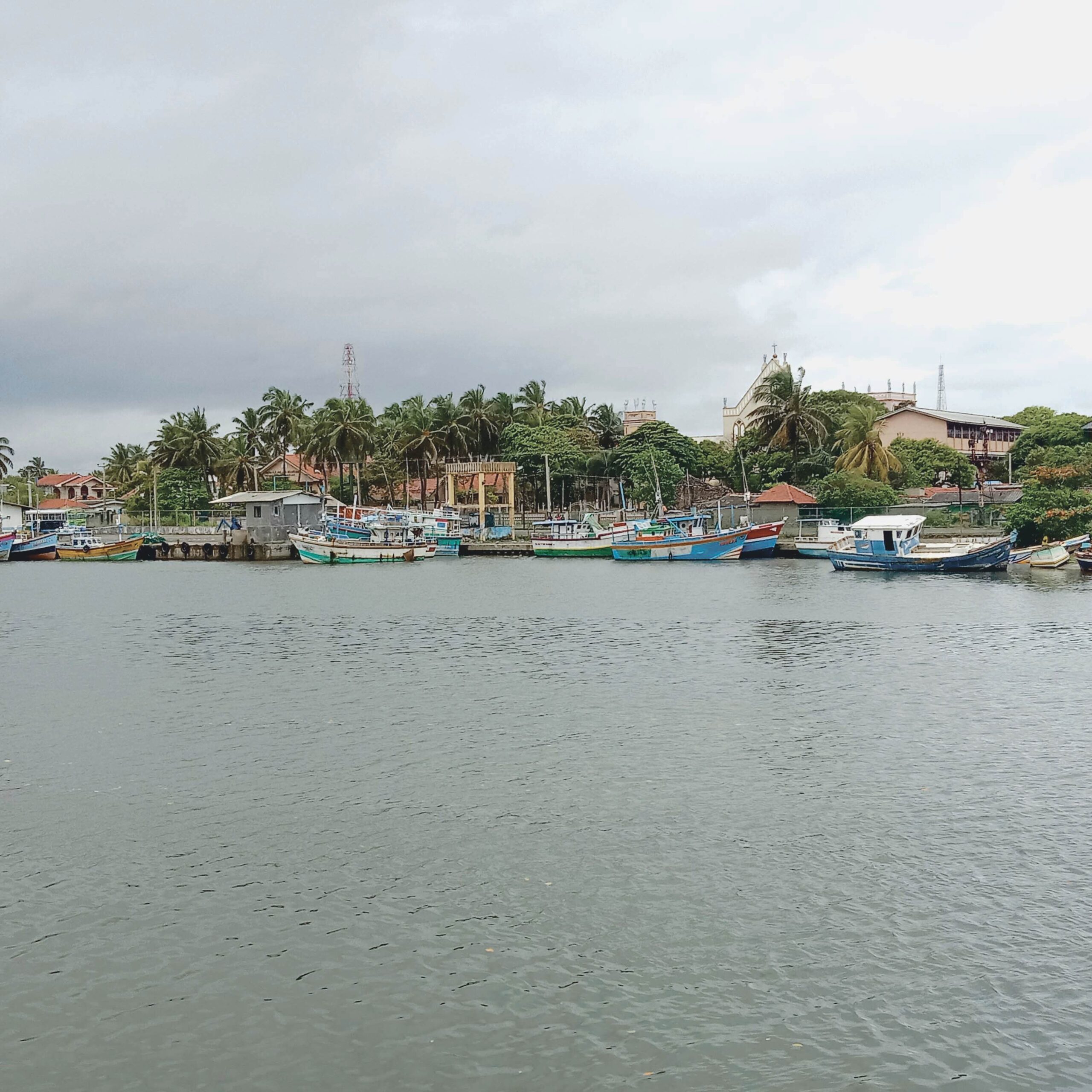
Shortly after, a Hundai van drove up; our luggage was stacked in the boot and we took off, heading out of the city straight for Chilaw eighty kilometers away. The roads were dark and unlit, and in the headlights of the car raindrops sparkled. Out of the city, we hit a coastal road. We could hear the crashing of waves and rain spattered the wind screen as we wound down the road that edged the beach on our way to Chilaw, the town with two significant temples of yore: Muneshwaram, dedicated to Lord Shiva and Manavari, a unique temple dedicated to Rama containing a Ramalingam.
Although victorious in war with Ravana, Rama felt uneasy. He worshipped Shiva at Muneshwaram, and sought a remedy to relieve him of the ‘dosha’, the shadow of death that was following him for killing a Brahmin ( Ravana was a Brahmin). Lord Shiva told Rama to build five linga temples to remedy the situation.
Standing at a distance, I looked up in awe at the towering temple choc-a-bloc with intricate sculptures on the outer façade. Golden gods and goddesses stood, each in their own niche all the way up to the shikhara. “Did Ravana build this temple?” I asked a priest. He looked at me, strangely and answered “This temple pre-dates Ravana; Ravana worshipped Shiva in this temple.” I was baffled and intrigued. Muneshwaram, is a temple of antiquity, one of the most venerated ‘panch ishwaras’ of Lanka, built in the classical style of Hindu temple architecture, with four ornate entrances, one in each direction. Layers of history are overlaid in this structure and the passage of time is evidenced with the inclusion of some Buddhist shrines within the main temple. Shrines, to Ganesha, Vishnu, Ram, Sita, Laxman and Hanuman, occupy space within the large temple, but the Shiva lingam is set deep within in the sancta sanctorum. The compound houses enormous chariots, reminiscent of Ravana’s chariots and they are used for festive processions to this day. The chant of OM reverberates continuously while hordes of people stream into the temple.
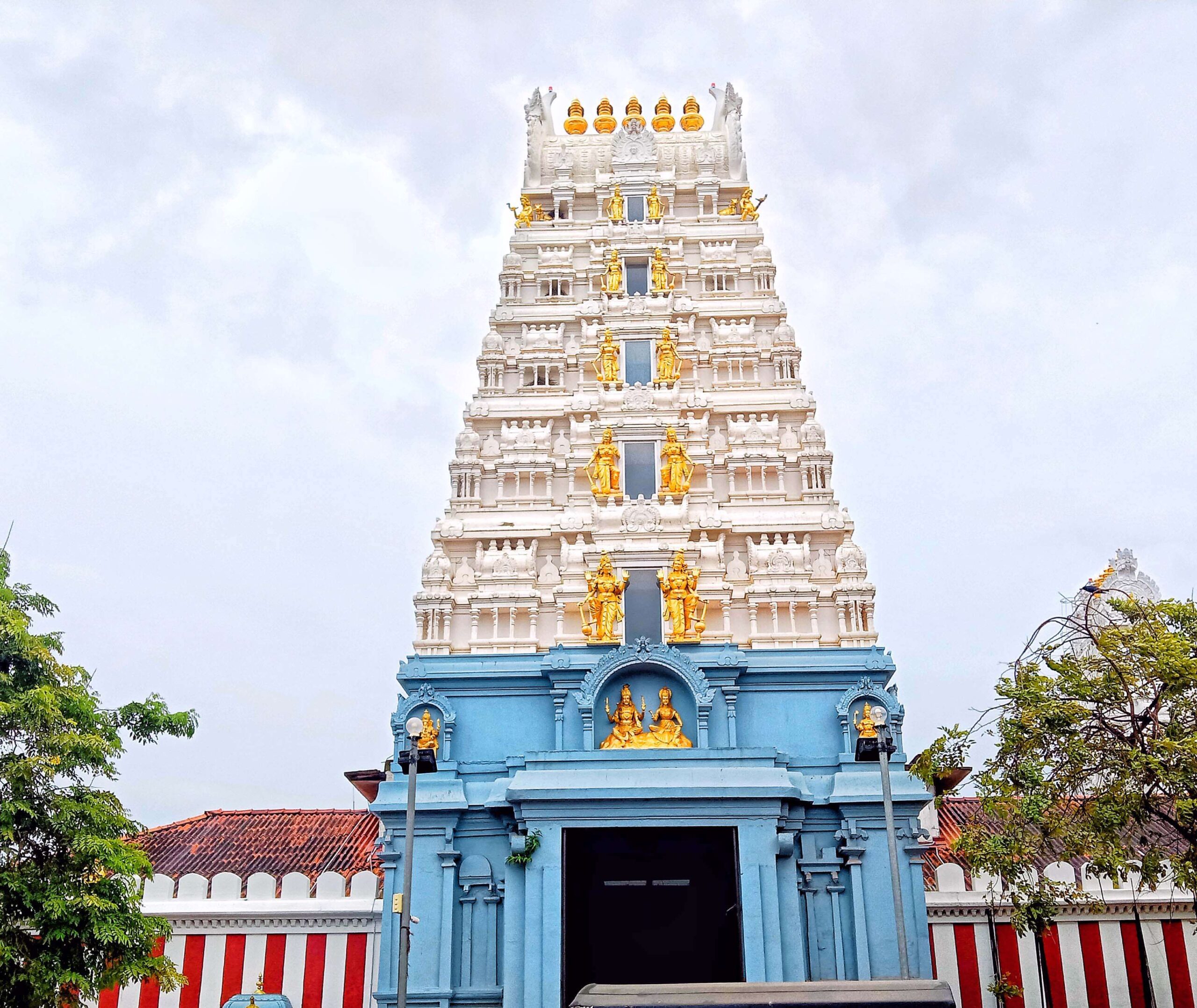
One of the several ‘rathas’ fashioned like Ravana’s vimana. A number of these massive chariots are housed in the
compound of the Muneshwaram temple
Manavari Kovil, is twelve kilometers north of Chilaw. It is an unpretentious building, but of great significance for Hindus. This was the first temple that Rama built on Lankan soil and installed a lingam to wash himself of the sin of killing a Brahmin. The Ramalinga is an extraordinary object of worship for Hindus being a representation of both Shiva and Vishnu. There are only two Ramalingas in the world; one in the Manavari Kovil in Lanka and other in Rameswaram at the northernmost tip of India both welded in worship.
Science has corroborated what the scriptures stated thousands of years ago. The Puranas and the Ramayana, tell us that Bharatvarsh during the Treta Yug, was vast and Sri Lanka was a part of it.
Valmiki, the author of the Ramayan, explicitly mentions a bridge, the Setubandhanam, that spanned the ocean and joined India at Dhanushkodi with Lanka at Talaimannar. Oceanography confirms that this strip of land is seven thousand years old, while carbon dating of the beaches near Dhanushkodi also substantiates the date.
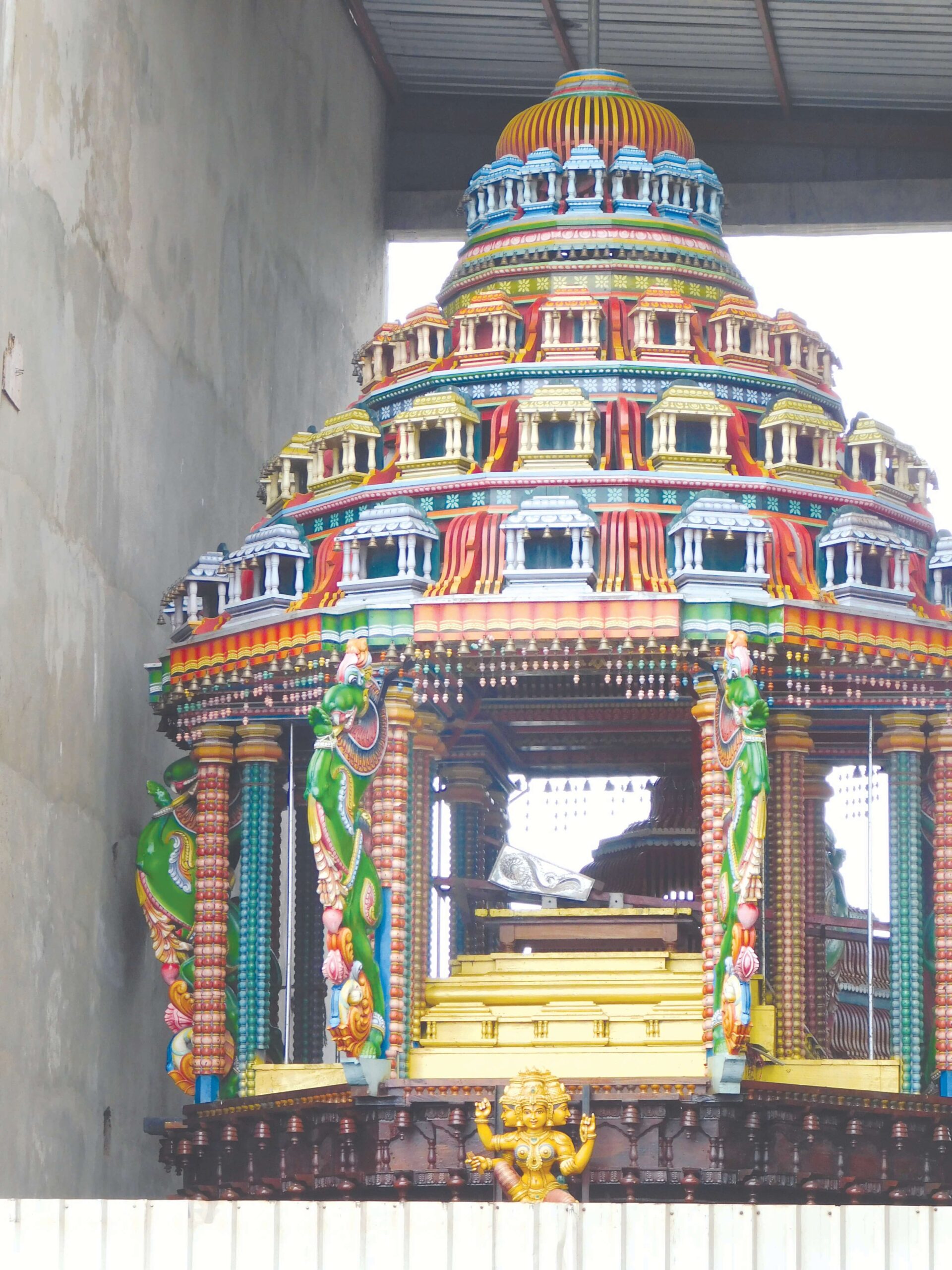
The ‘golden palace’ at Sigriya
Ravana, king of Lanka was a Dasanaan with ten heads that symbolised his thorough knowledge of the four Vedas and the six Upanishads. Thus he was a Brahmin.
Lord Shiva’s consort, weary of the ascetic life in the Himalayas wanted a home. Lord Shiva although an ascetic, was a loving husband. He asked Vishvakarma to build a palace and a magnificent golden palace was built for Parvati. Ravana was asked to perform the ‘Griha Pravesh,’ house warming puja for them. Pleased with the puja, Shiva offered Ravana a boon as his dakshina and Ravana, asked for the golden palace itself!
Sigiriya : ‘Be ready and in the car by 5.45a.m.”, said our guide. We winced at the thought of an early rising while on holiday, but nevertheless complied. In hindsight it was a wise decision. As the day wore on, it became burning hot. Sigiriya is located in the northern Matale District near the town of Dambulla. It is an astounding site of both historical and archaeological significance, dominated by a gargantuan block of granite approximately six hundred and sixty feet high. Eminent historians believe that the vast plateau atop the Sigiriya rock held Ravana’s majestic golden palace. Only a being with Ravana’s extraordinary powers could have accessed it, was the thought that crossed my mind as I gazed at the rock!
Sigiriya has two parts, the Western part which is about two hundred and twenty-three acres and the Eastern part, which is about a hundred acres. It has a high park area, with three ramparts and two moats. The Eastern part has boulder gardens and the Naipena Guhava, or The Cobra Head Cave.
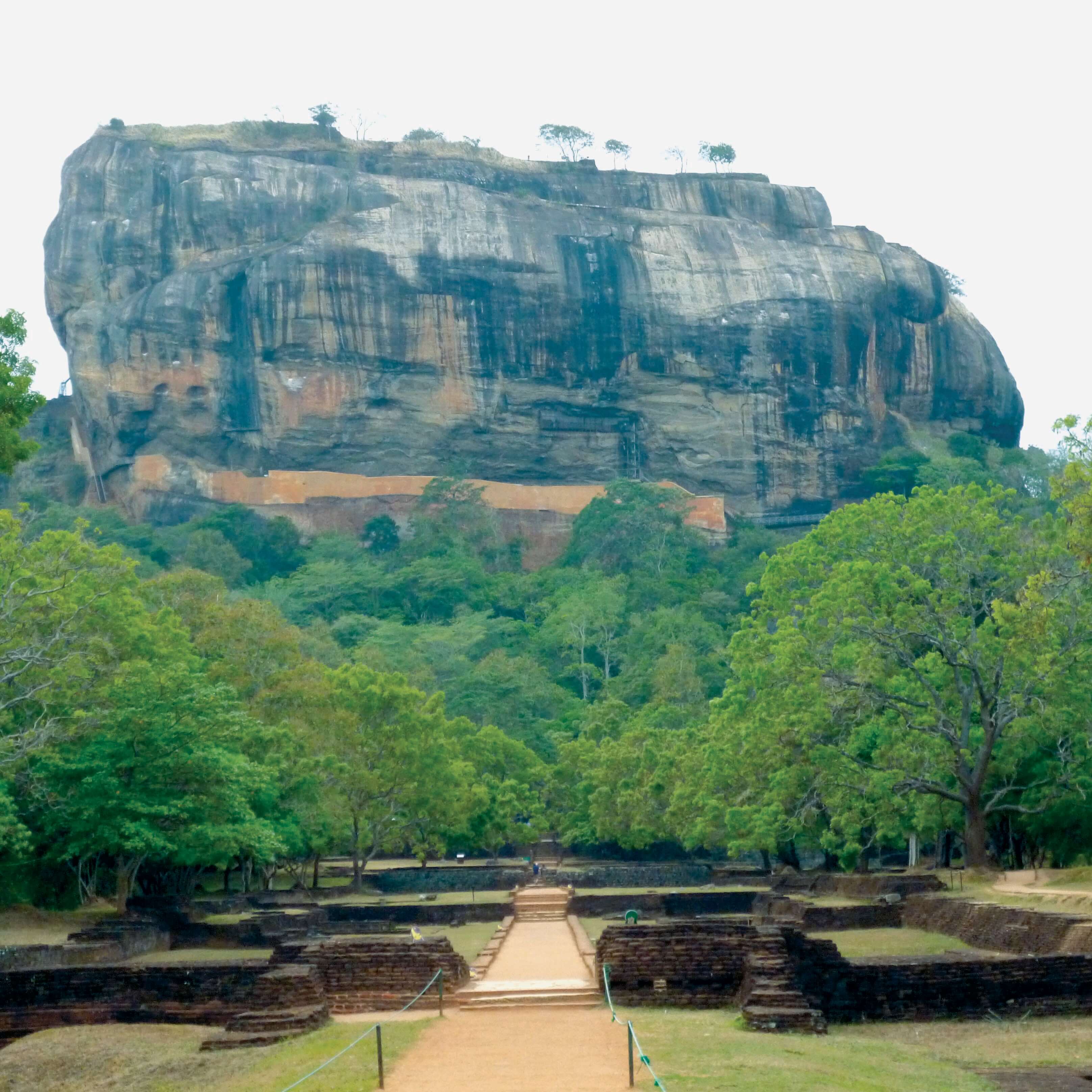
By six fifteen a.m. armed with our entrance tickets and a bottle of water, we began our ascent of Sigiriya Rock in the cool of the morning. We walked at a comfortable and even pace knowing that there were one thousand two hundred steps to negotiate. The climb began with an easy incline surrounded by trees. Every few yards there was an information plaque attached to a tree or placed on a stand, but since it was in Sinhalese, we kept going, stopping only for sips of water. Looking around we noticed water tanks and what would have been well laid out gardens almost in the style of the Mughal gardens in Kashmir! As the incline increased, the steps narrowed, the stones became uneven and high and we had to lever ourselves up to the step above holding on to the stone wall on the inner side. The climb seemed interminable! But, the higher we got the better was the view of the verdant surroundings below. Finally, panting and puffing we got to the entrance of the ‘Lion Rock’ fortress as it is called. Solid rock has been sculpted into giant lion’s paws and steps arise from between the huge paws moving up into the dwelling above! There are no railings to hold, so one must climb this narrow ribbon of gravelly steps with utmost caution. At last! We climbed the last few stones and stood up on a flat platform that stretched beyond sight. A drizzle set in and we savoured the cooling drops after the heated climb.
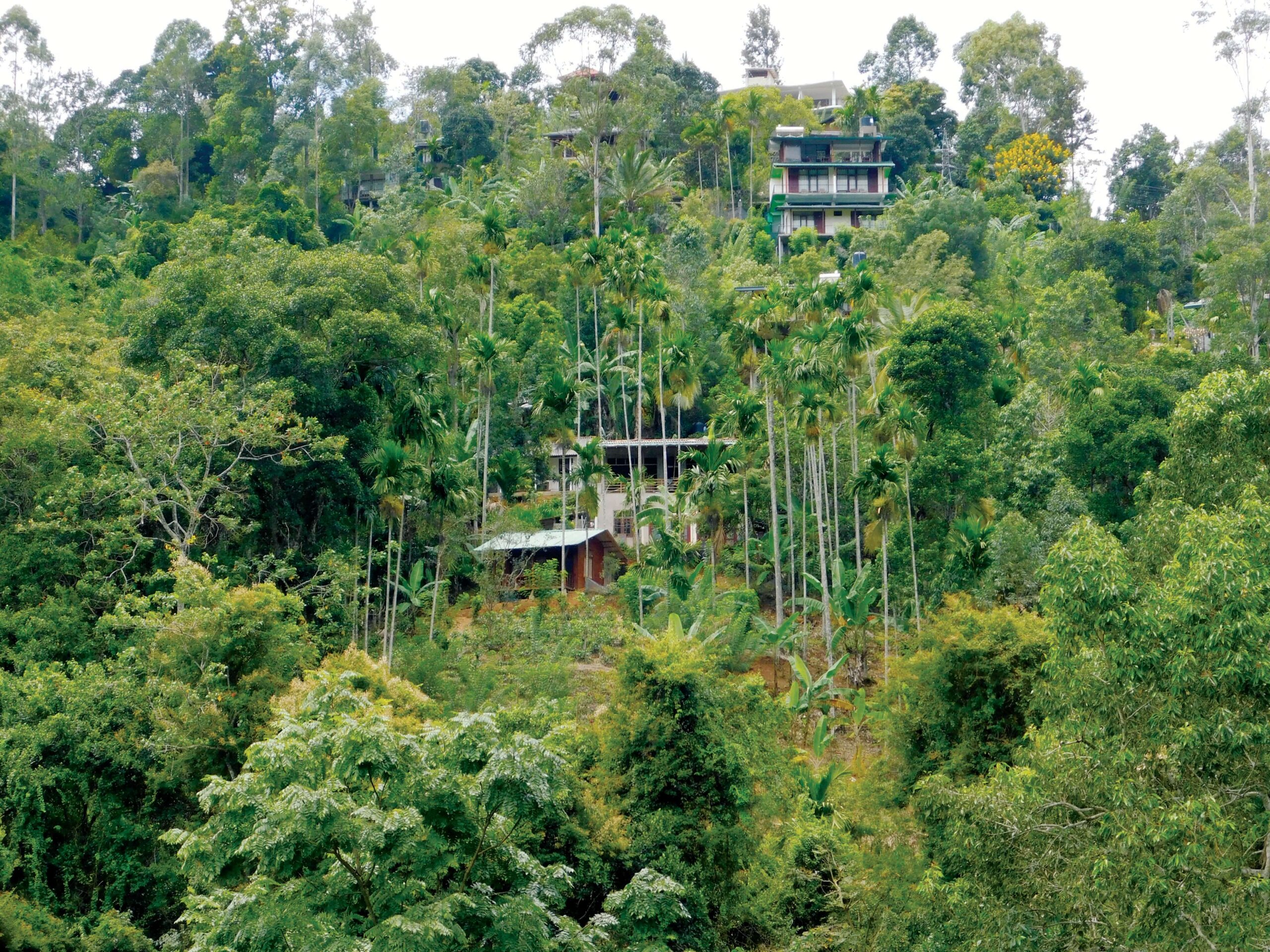
Nothing is left of the palace, except broken walls, and interconnecting pathways with signs that say ‘eastern palace or northern palace’, so we located a raised flat stone and gratefully sank down, imagining ourselves on a throne, cooled by the drizzle, surveying the entire country from an aerial height while munching on biscuits! Having cooled off we began our descent. The route up and down Sigirya rock has been so designed that different parts of the palace can be observed. During the descent we came upon a spiral connected to a high hanging cave. This was the fresco cave which depicts palace life and its people. Here too, the style of the paintings and facial features of the subjects were akin to those of the Ajanta frescoes in India. Here too, photography was not permitted. Further down we came upon a vast platform, laid out like a theatre and needless to say it was the audience hall. Then came the Cobra Cave! An enormous natural rock formation that appears like a raised cobra hood, nestled in the jungle. There were some faded paintings on the ceiling that were barely visible, but legend says that Sita was held prisoner here for some time.
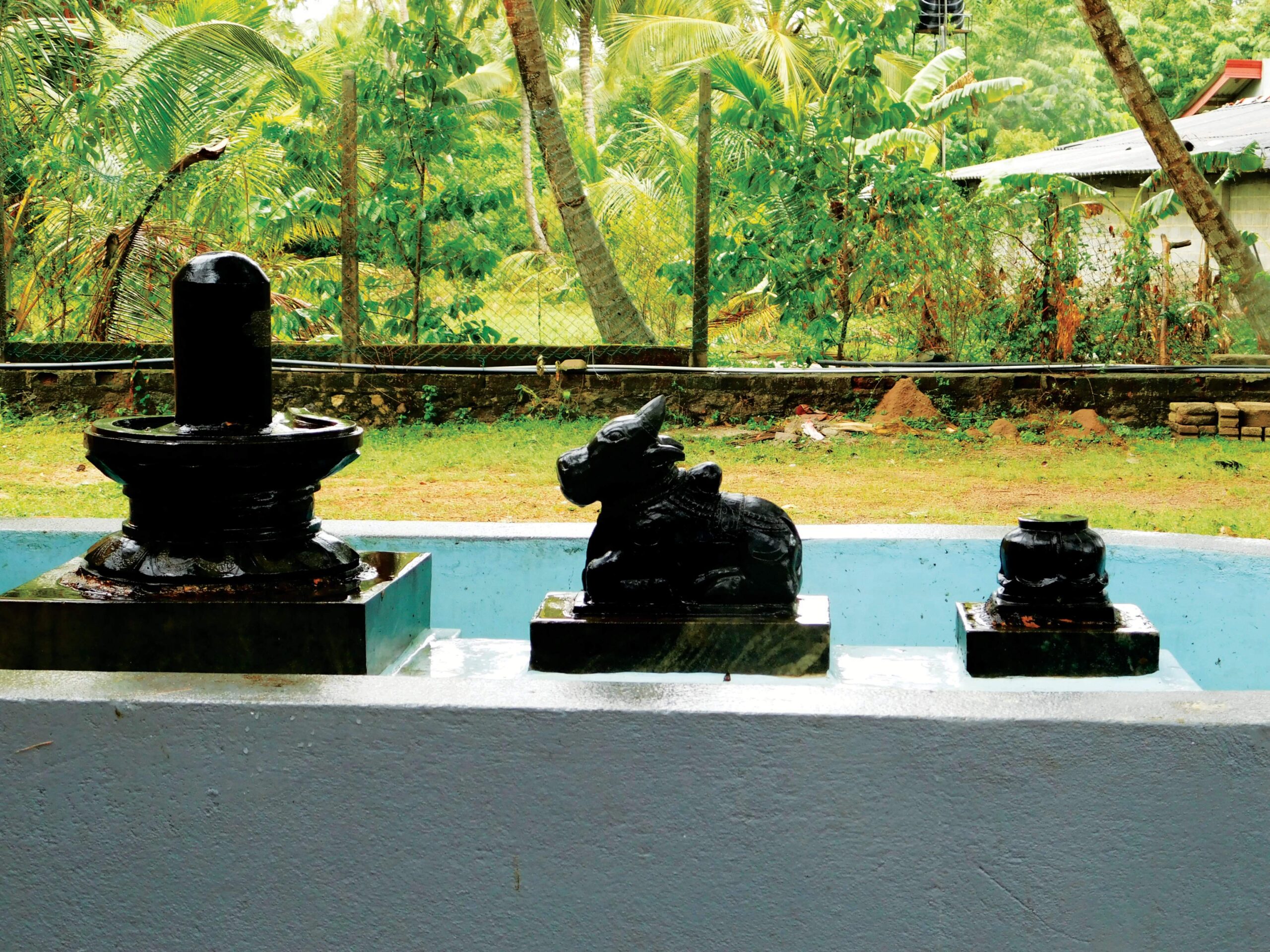
Sita`s abduction
Sita’s nightmare began in the eleventh year of exile in the Dandakaya forest. Surpanakha, Ravana’sister, saw Rama in the forest and coveted him. Rama spurned her advances and so did Lakshmana. Humiliated, Surpanakha sought to attack Sita as the cause of the men’s contempt for her. Lakshmana intervened and cut off her nose and ears. Disfigured, she retreated to Lanka to seek succor from her brother Ravana, and avenge herself.
Ravana coerced Mareecha, a rakshas in the Dandaka forest to assume the appearance of a golden deer and entice Sita. As expected, Sita was enamoured of the creature and insisted that Rama catch it for her. Mareecha lured Rama deep into the forest. When he was unable to catch the deer, Rama let loose an arrow bringing it down. Mareecha regained his original form and imitating Rama’s voice screamed for help. A frantic Sita compelled Laxmana to go and rescue his brother. As soon as Laxmana departed, Ravana appeared in the garb of a mendicant seeking food. He feigned religious wrath and lured Sita out of the hut, then seizing her by her hair, carried her off to his ‘viman’ a flying vehicle. As she was being abducted Sita spied five monkeys on a mountain top. Wanting to give Rama a clue to her whereabouts, she threw down her shawl and jewellry, which the monkeys picked up. Presently, Rama and Laxmana came by searching for Sita. The vanars befriended them and showed them the jewellery and the shawl.
The search for Sita
Lankapura was the hotbed of action following the abduction of Sita and there are over fifty sites in Sri Lanka connected to it.
Weragantota the “place of an aircraft landing” is where Ravana set Sita down in Lankapura. Dense jungles cossetted the beautiful city of Lankapura. Ravana’s wife, Queen Mandodari’s palace stood in these picturesque surroundings, but Sita refused all hospitality even from the queen and was therefore lodged in the courtyard of the palace in the area now called Sita Kotuwa. Wanting to ensure that Rama should not find her, Ravana moved her into the mountains to the Ashok Vatika. The route was said to be spectacular. Today, there is barren land atop the mountain range across which Ravana drove from Lankapura to Ashoka Vatika. The chariot path atop the mountain range is still visible, but remains barren.
During the ride Ravana gave Sita some rice balls to eat, but she accepted nothing from him and threw them away. Villagers named them Sita Goli, and they are found along the chariot track to this day. They are used as medicine. Carbon dating done on these rice balls have ascertained them to be more than five thousand years old!
Another memorial to Sita’s suffering in captivity is the ‘tear pond’ formed along the chariot route. Where her tears fell a pool was created and it does not dry out even during droughts. The area also has several trees with bright red blooms the ‘Sita’ flowers. Petals, stamen and pistils, of these flowers resemble a human figure carrying a bow and they are only found in this area of Sri Lanka.
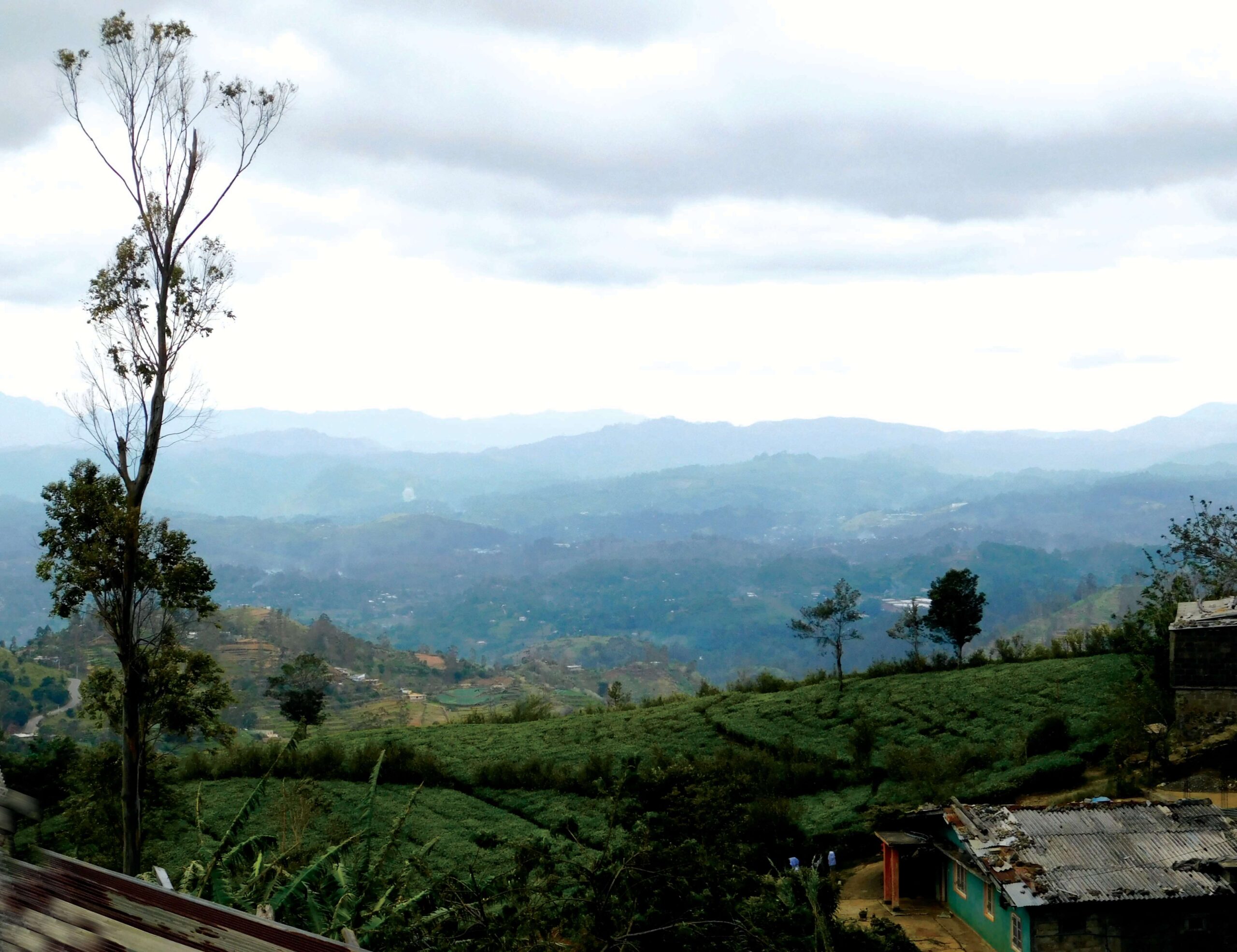
Nuwara Eliya, is the main theatre of Sita’s story. The Ashoka Vatika, her open air jail was a little way out of Nuwara Eliya in a place now called Seetha Eliya. It was Ravana’s pleasure garden, and he tried to woe her, but she spurned him. She sat on a rock and wept, waiting for Rama. The rock is called the Hakgala Rock and the Hakgala Garden is located at the base of the rock, once a part of the Ashok Vatika. Sita Pokuna was a barren area atop the Hakgala Rock where the Sita Amman Temple stands presently.
The Seetha Amman temple, is the only temple dedicated to Sita. It lies about five kilometers out of Nuwara Eliya. Hanuman had located Sita here and carried news back to Rama and the vanara army waiting on the shores of Southern India.
Edging the roadside with the dense jungle as its backdrop, the Seetha Amman Temple is of recent origin, being built in the early 2000s, but its location is ancient. Three idols, Sita, Ram and Laxman were retrieved from the stream flowing behind the temple. The temple has a golden outer façade in the style of South Indian temples with Rama, Sita and Laxmana as the central figures on the entrance arch. A large statue of Hanuman kneeling is by the side of the entrance. The idols of antiquity are enshrined in a central space, while there is a small Ganapati shrine and huge paintings of Hanuman adorning the walls within. Photography is forbidden. This rule has stemmed from the latest fad of people taking selfies with their backs to the deities!
Steps from the temple lead down to the stream where foot prints akin to Hanuman’s have been found. Some are small and some are large, testifying to the powers of Hanuman of being able to alter himself to any size. A foot print is outlined in gold and on a large rock above the foot print is the tableau of Sita in the forest seated on the rock and Hanuman standing before her. Monkeys abound in the area. They move silently in and out of the temple unrestricted. They accept the pilgrims and the pilgrims accept them.
Our search for Sita, takes us to Ella which bears the clearest imprints of the Ramayana events. Ella is a small town in the mountains. It is a cool verdant area conducive to walking. Trees engulf dwellings and vehicular traffic is low. Roadside cafes and souvenir shops line the main street. That it was an impenetrable jungle thousands of years ago is easily imaginable. This region is supposedly full of underground tunnels that Ravana used to move about unobserved and through which he moved Sita to secret locations.
Two kilometres out of Ella is the Ravana Cave at one thousand, three hundred and seventy meters above sea level. Ravana used this cave to conceal the abducted Sita. The climb up to the cave is a steep, dangerous and difficult one with over six hundred and fifty uneven steps. Some places have no steps at all, just jagged rocks. It appears to contain a supernatural energy that makes people uncomfortable. The Ravana cave consists of one part of a tunnel which is connected to the Ravana Falls in Ella. Tunnels served as fast and secret transportation paths through the hills.
Ravana Falls, a twenty-five meters waterfall, is located behind the cave. During the wet season, this magnificent waterfall is one of the widest in Sri Lanka.
Ravana caves, Ravana waterfalls and the Ravana wildlife sanctuary are all concentrated in Ella. A road has been cut through the jungle and at a designated point visitors are allowed to stop and view the Ravana falls. It is possible to go off the road and onto the rocks where the flow of the water is not ferocious, but it is still a dangerous venture as the rocks are mossy and slippery. The volume of water depends on the monsoon, but legend says that the waterfall was so heavy it formed a curtain and Sita bathed in the pool at the bottom of the fall.
Subsequent to Hanuman’s discovery of Sita’s location in Lanka, Ravana knew that Rama was on the way. He moved Sita to various secret locations as a precaution. Ravanagoda, in Kotmale, a complex of tunnels and caves was one and Istripura, was another with an ingenious network of interconnected pathways.
The war and defeat of Ravana
With Sita’s location confirmed, Rama and his army crossed over the Sethubandhanam and entered Lanka from the North. War broke out. During the course of the war Laxmana was hit by Indrajit’s Brahmastra and fell unconscious on the battlefield. Hanuman was dispatched to the Himalayas to fetch the life giving Sanjeevani herb to revive him. Unable to identify the herb, Hanuman uprooted the entire hill with all its flora, but when returning, bits of the hill fell in five places in Lanka.
Rumassala was one of them. Mysteries abound in Rumassala. It is a haven for herbs and researchers have recorded one hundred and fifty species unique to this hill and not found elsewhere. The soil of this hill is inherently different from that of the surrounding area and supports the Ramayana legend that it belongs to a totally different geographical location.
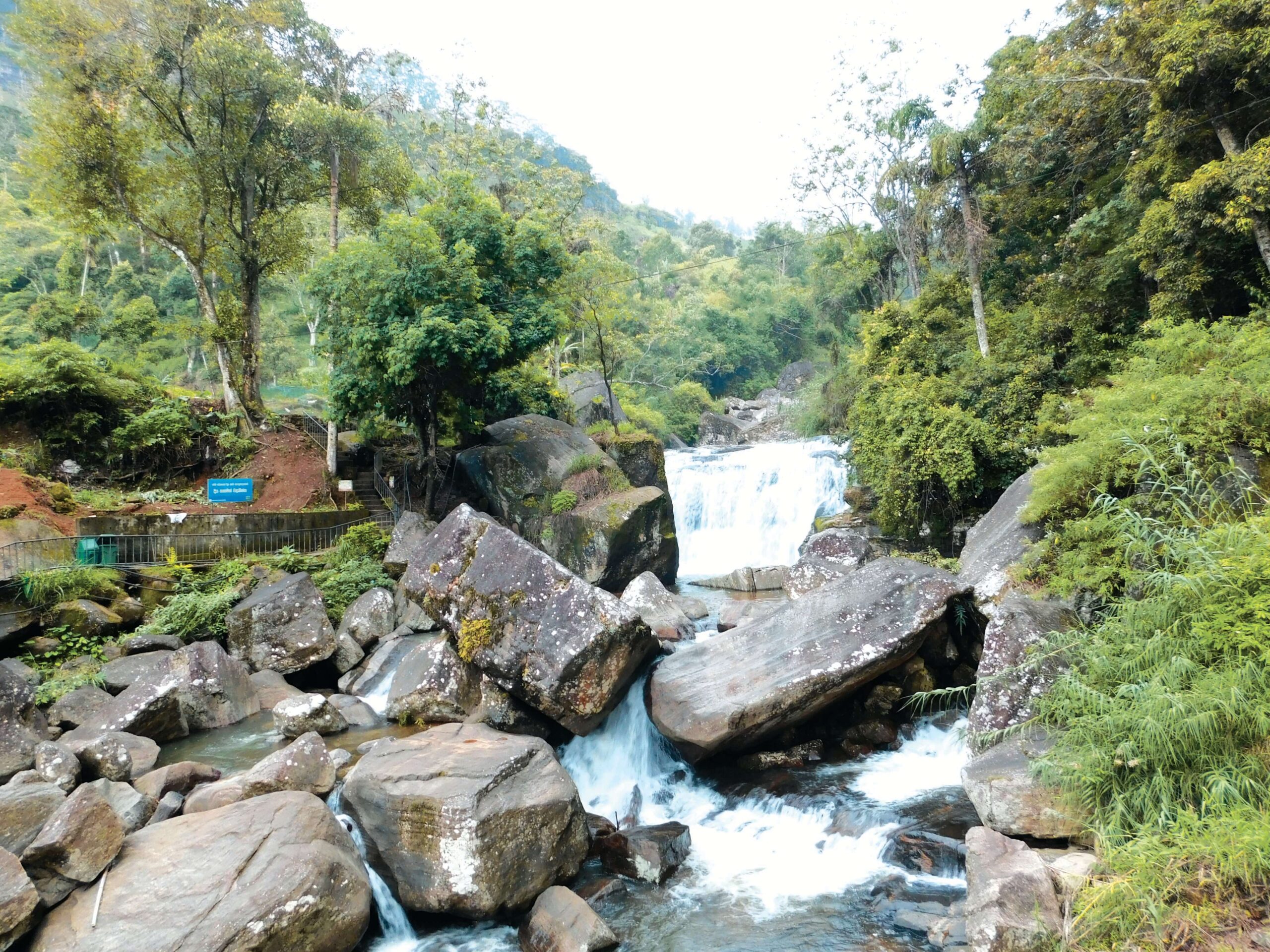
Rumassla is a forgotten factor of the Ramayana. It is better known for the Shanti Stupa built by the Japanese on the site. It was a rainy day and the slopes leading to the stupa were slick with moss. Treading on bare feet I walk in and ask the old lady selling lotus flowers about the Hanuman temple. “Hanuman” she says. “Come” and leads the way up a gradient where tucked away almost out of sight is an enormous idol of Lord Hanuman towering over the town holding up the Sanjeevani hill and adjacent to that is a small shrine of Lord Ganesh, simply adorned with diyas. “I am looking for the Hanuman temple” I tell her and a stocky man walks up to me and points the way. Further up another wet and wooded slope stood a tall Buddha at the gate. Once again on bare feet I walked through, expecting to see someone within, but all was silent. Going past the Buddha statue, I came upon a shrine with all the gods and goddesses of Hinduism packed together in a small space in photo frames. On the opposite side were statues in glass cases. The rest of the temple housed several Buddhas. I pay my respects to all the divine beings seated there and exit.
The Sanjeevani herb revives the injured in Rama’s camp. Fierce fighting goes on until finally Ravana is vanquished by Rama.
Heartbreak
A victorious Rama sent for Sita and they met at Divurumpola which became the site of her ‘Agni Pariksha’ test of fire.
Sita came to Rama, overjoyed, but Rama averted his face, and when he spoke his words were cruel and cutting, “I have killed my enemy. I have done my duty, but you have lived for a year in the enemy’s abode. It is not proper that I take you back now.” Sita was stunned. “You have broken my heart” she said, “Only the uncultured speak like this”. She bade Lakshmana to build a fire. With suppressed rage, Lakshmana looked at Rama, as he lit a pyre, but Rama did not relent. Sita walked into the blaze hands folded in prayer.
“Slow the red flames rolled asunder, God of Fire incarnate came, Holding in his radiant bosom fair Videha’s sinless dame, Witness of our sins and virtues, God of Fire incarnate spake, Bade the sorrow stricken Rama back his sinless wife to take:” Ramayana of Romesh Dutt.

